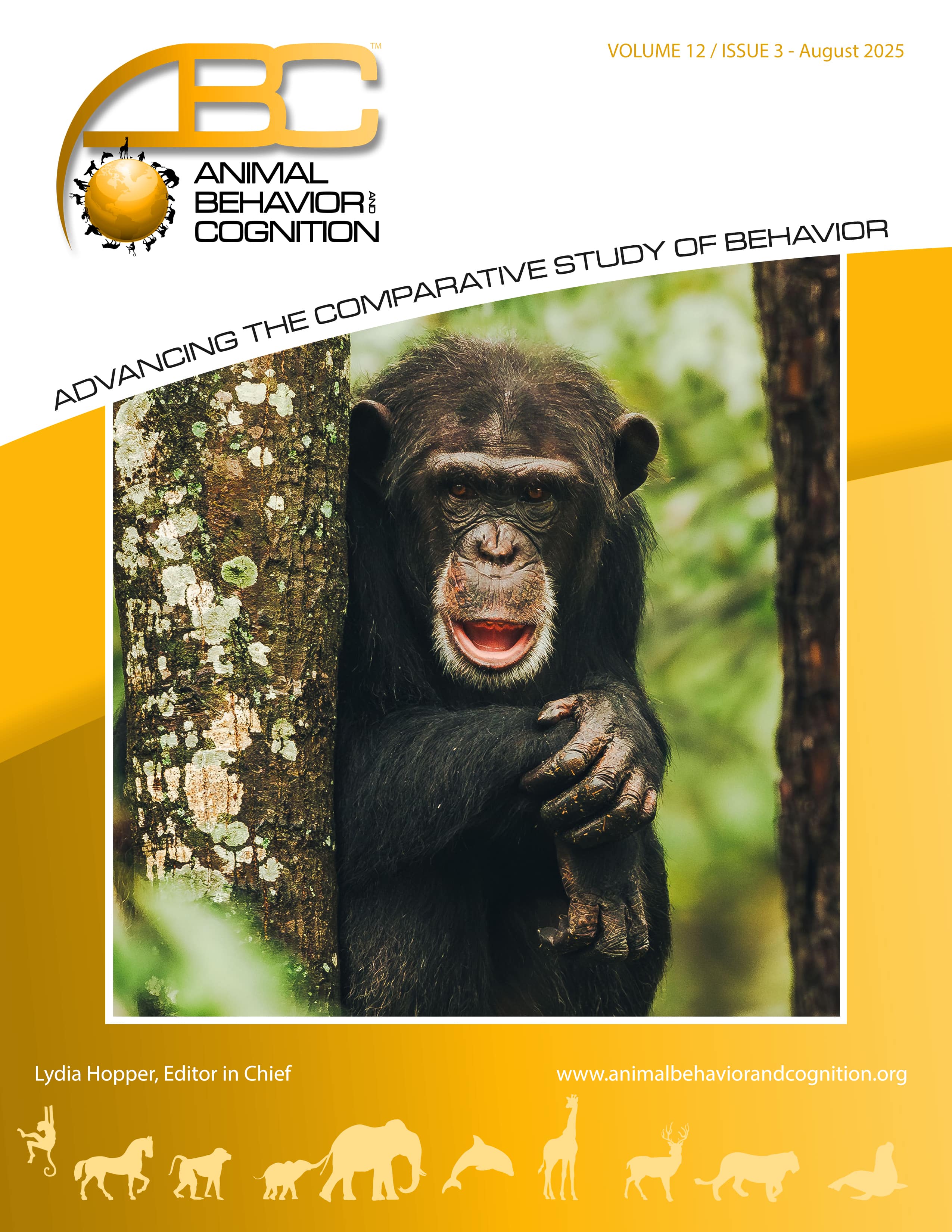Vol 12, Issue 3, August 2025
Gaze Audits Food Items for Bite Points During Human Withdraw-To-Eat Movements: Two Modes of Vision for Anthropoid Primate Withdraw-To-Eat
Citation
Whishaw, I. Q., Kuntz, J. R., Ryait, H., Philip, J., Koples, J., Dudley, J., & Karl, J. M. (2025). Gaze audits food items for bite points during human withdraw-to-eat movements: An explanation for Anthropoid primate gaze during withdraw-to-eat. Animal Behavior and Cognition, 12(3), 404-430. https://doi.org/10.26451/abc.12.03.04.2025
Abstract
A distinguishing feature of anthropoid primates is the significant contribution of vision in influencing hand movements, particularly those involved in eating. However, the hand movements of eating are complex, and vision contributes differently to their components: the reach, grasp, and withdraw-to-eat actions. This suggests that these components are controlled by distinct visuomotor networks that likely have unique evolutionary histories. An additional puzzling aspect of gaze-related eating behavior is that gaze durations vary with differences in food items. Due to the technical challenges of monitoring food-related gaze in nonhuman anthropoids, the present analysis investigated the use of gaze with human participants. Eye-tracking and frame-by-frame video analyses were used to examine gaze patterns, gaze duration, gaze disengagement, eye blinking, and hand preference used in eating various food items. The results show that gaze identifies points on a food item that the dominant hand can grasp and then locates points on the food item that the mouth can engage to grasp or bite. Hand and finger shaping movements during both the initial grasp and subsequent food handling help expose targets for hand grasping and mouth biting. A comparison of real and pantomime eating suggests that only some real food items possess the affordance necessary to elicit gaze patterns for identifying targets for hand grasps and mouth bites. These findings are discussed in relation to the idea that there are two modes of visual control of withdraw-to-eat action, with peripheral vision providing guidance to the mouth and foveal vision auditing food for effective mouth biting.
Keywords
Bite points for withdraw-to-eat, Gaze and blink to reach, Gaze and pantomime reach, gaze and real reach, reach and food audit, gaze and human food eating, visual attention for biting
